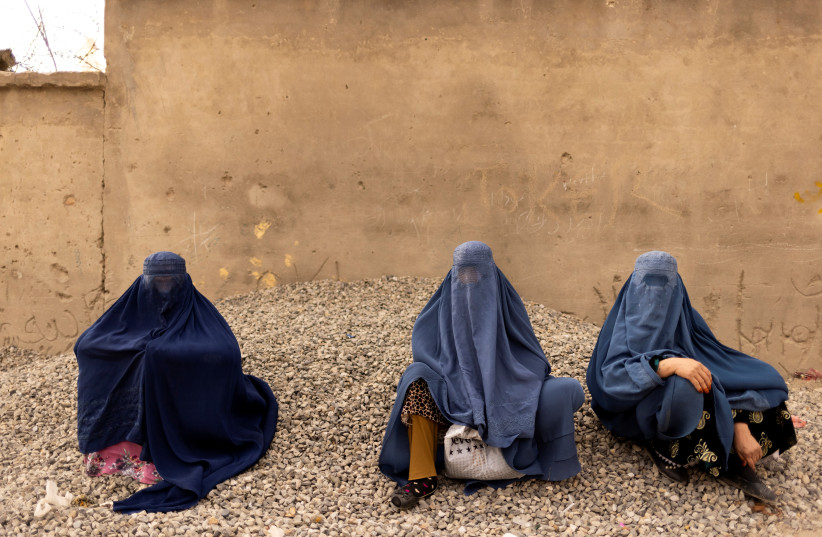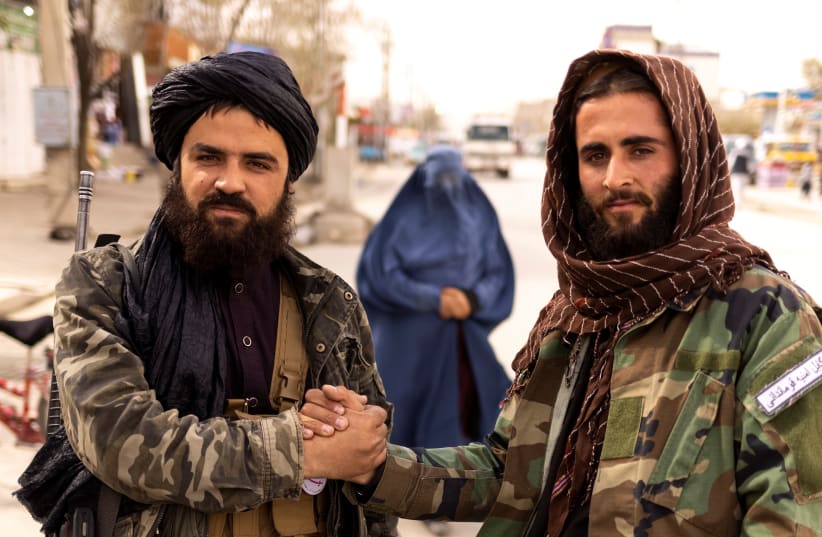The Taliban were seeking to again force women to wear the burqa in public this weekend. This comes after weeks during which Shi’ite minorities in Afghanistan have been targeted in bombings and terror attacks.
The Taliban rule of Afghanistan looks to be returning to the horrors of the 1990s – and this time, its return to power was paved by Qatar, Pakistan and other countries. The US and the West’s intervention in Afghanistan had the unintended consequence of weakening opposition to the Taliban and helping their return to power, cementing their control even more than it was prior to 9/11.
“Afghanistan's supreme leader and Taliban chief on Saturday ordered the country's women to wear the all-covering burqa in public -- one of the harshest controls imposed on women's lives since the hardline Islamists seized power,” an AFP report said.
"Those women who are not too old or young must cover their face, except the eyes, as per sharia [Islamic law] directives, in order to avoid provocation when meeting men who are not mahram (adult close male relatives)," the decree said. The Taliban are also trying to get women to stay home and not work.


As it had been, so it shall be
It looks like Taliban rule is heading toward the same harsh extremes that had been imposed before 2001. This comes despite claims the Taliban have become more moderate and would not be as harsh as before.
In fact, the Taliban return to power was engineered from Qatar, a country that has backed the far-right and extremists across the globe and the Middle East. The Taliban were hosted in Qatar, which helped them in their discussions with the US. America's goal after the Obama administration was to leave Afghanistan in a peaceful manner, without making it seem like the US was abandoning the country. But this resulted in the Western-backed government of Afghanistan collapsing after several weeks, with the Taliban taking Kabul and brokering the last flights out as it had done security for the US.
THIS STRANGE turn of events raises some eyebrows. How was it possible, after 20 years and billions of dollars, that nothing was left behind except an empty shell ready to be given to the Taliban on a plate? Where were the government forces and even the former opposition forces to challenge the Taliban? How was it possible that after 20 years, the country was left even weaker than in 2001 and with less opposition to Taliban rule?
It was as if the whole plan over the last several years was to hollow out the country, move its wealth abroad with some corrupt war lords and politicians empowered by the West, and then get rid of anyone who might oppose the Taliban and hand the country back in cooperation with Pakistan, Qatar and other countries.
Who benefits from the circumstances?
This is good news for China, Iran, Russia and others, because now they can help to empower the Taliban and cut energy and other deals. Pakistan and Qatar will profit, as likely will Turkey and other countries that support groups like the Muslim Brotherhood. The people of Afghanistan will suffer, especially women, Shi’ites and others.
The Taliban today appear stronger and with more international support than in the past. In essence, they profited greatly over the last 20 years; had they not hosted Bin Laden and Al Qaeda and been invaded in 2001, they would be weaker today. They have cashed in, as have some of the Kabul government officials who had lucrative contracts with the West.
Now they feel that a year after the US left, they can put in place the harsh laws that they had in the past. These will target women and education – and slowly but surely, the country will become more extreme than it was, but this time enjoying support from countries that benefit from the current situation.
Some know what is coming. Activists and experts say that the country is starving. India and Italy have had recent discussions about issues, including Afghanistan and regional security. There is still limited resistance in Panjshir to Taliban rule. Afghanistan under Taliban rule is regressing back to how it was in the 1990s.
